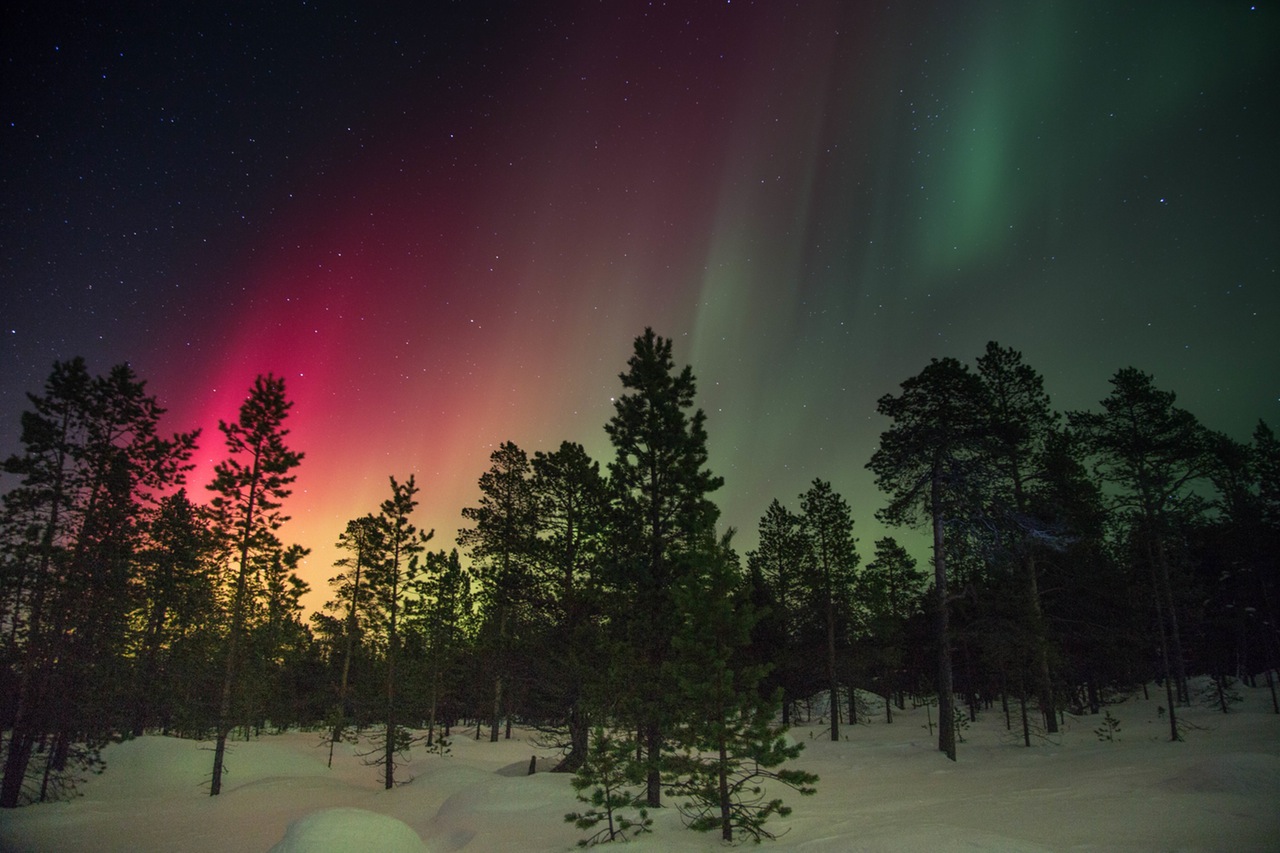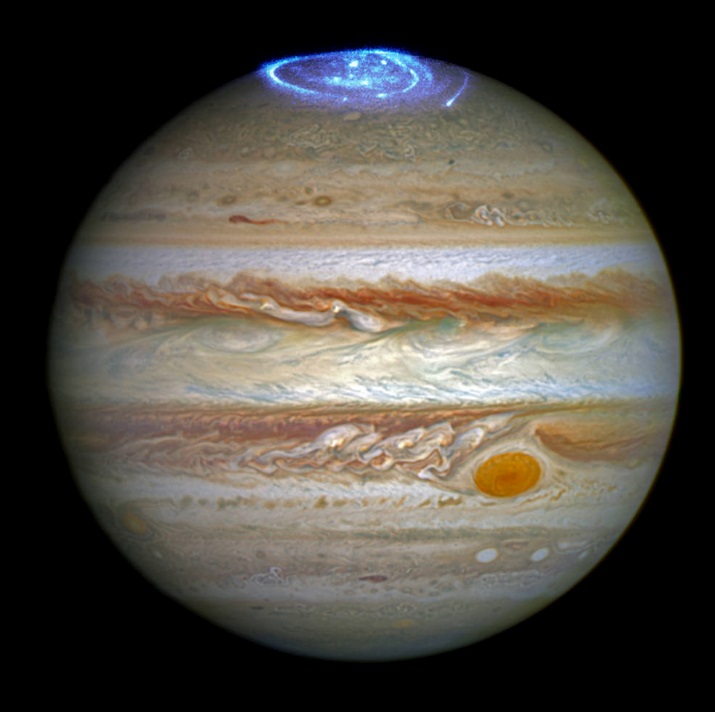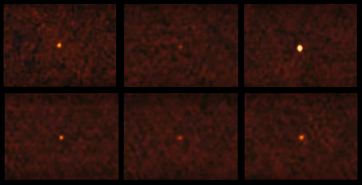
Now Playing in a Sky Near You
Phil Kesten
Perhaps you’ve been lucky enough to see the aurora—curtains, arcs, and spirals of colored light shimmering across the sky. If you were in the northern hemisphere they were the aurora borealis, or “Northern Lights.” In the southern hemisphere they would have been the aurora australis. Let’s wonder a bit about the aurora.
Neon signs are everywhere. Atop a roadside motel or the local pizza place, throwing off light in every color that can be seen from miles away. The physics of the glowing tubes in that sign is very much the same as the physics that underlies the aurora.
At the heart of a neon sign is a glass tube filled with gas, typically neon gas. A high electrical current is made to flow down the tube, sending energetic electrons smacking into gas atoms. Some of that energy gets absorbed, but this makes the atoms unstable. After a short time, the atoms radiate the excess energy away. Because of the particular configuration of electrons in a neon atom, most of that energy is radiated in the form of orange-red light. Tubes filled with other gasses, such as argon, helium, and krypton, can radiate pale blue, orange, or green light.
Think of Earth’s atmosphere as a giant neon sign. It is filled with gas, of course. Just turn on the electricity and it begins to glow. But what is the source of energetic electrons needed to turn on the light show?
Our sun.
The sun is hot, really hot. Around 2 million degrees Fahrenheit in the corona, the billowy “crown” that surrounds the sun. All that heat energy rips hydrogen atoms in the sun apart, sending their constituent electrons and protons rocketing around at speeds of 2,000 miles per hour or more. The sun’s gravity isn’t strong enough to hold on to all of these high-energy particles. More than a trillion, trillion, trillion of them stream away from the sun every second. This is the solar “wind.”
At the center of the Earth is the “inner core,” a solid or relatively solid sphere composed mostly of iron. The outer layers of the Earth are also solid, of course. But in between is a region of molten – liquid – metal. This region rotates as the Earth spins, giving rise to a rotating electric current. Electric current? The current in the Earth’s liquid outer core turns our planet into a giant bar magnet.
A magnetic field pushes on moving charged particles. The direction of that push causes the electrons and protons in the solar wind to spiral in toward the north and south magnetic poles of the Earth. As they zoom in toward the surface, they strike atoms and molecules in the atmosphere. Just like in the tube of a neon sign, some of the energy of those charged particles gets absorbed and then radiated away.
High altitude oxygen radiates crimson light. Oxygen at lower altitudes produces mostly green light. At even lower altitudes, nitrogen gas molecules can produce both red and blue light. And combinations of these colors can produce yellow, pink, and even orange light. The overall effect is spectacular!

An aurora can occur on other planets. The Hubble Telescope captured this image of the aurora on Jupiter.

And the phenomenon of the aurora has even been observed outside our solar system. In July of 2015 astronomers at the National Radio Astronomy Observatory in New Mexico recorded the blinking glow of an aurora around a brown dwarf star, 100 trillion miles away. This series of images occurred over a span of five seconds.

The aurora is nature’s spectacular light show. Now playing in a sky near you. (If you live fairly north or fairly south on Earth.) Go see it!
----------------------------------------------------------
Questions to ponder:
Why do the Northern Lights appear to shimmer and dance?
A relatively small region of the sun can suddenly erupt, spewing a large amount of matter and radiation out into space. Such solar flares occur, along with sunspot activity, on an 11-year cycle. What effect do you imagine a large solar flare would have on the aurora. (Hint: The author once saw the aurora borealis while driving through central Connecticut. Yes, Connecticut.)

